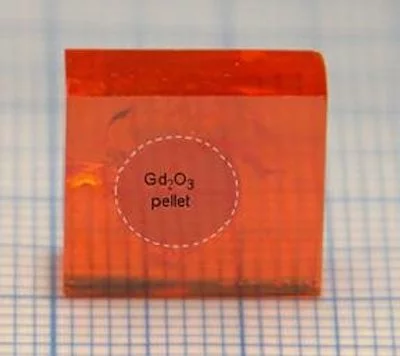Perovskite crystals are quickly gaining a name for themselves in the solar energy field, thanks to their impressive ability to convert photons into electricity. But scientists have now tweaked this process to pick up neutrons instead, making an effective detector for leaks from radioactive materials.
Perovskites are a class of minerals with a crystalline structure that makes them very effective at interacting with photons. The most notable application is in perovskite solar cells, which have exploded in efficiency in a little over a decade, reaching up to 25.5 percent alone or 29.15 percent when paired with silicon.
But their uses could extend beyond generating electricity from light. This same mechanism could be used as a light sensor – if the device gives off a jolt of electricity, then light is coming in from somewhere. And now, a team of researchers has adapted this process beyond photons to a new type of subatomic particle, the neutron. Free neutrons are emitted through nuclear reactions, so a perovskite-based device could be used to detect leaks in nuclear power plants, or radioactive materials that are being improperly stored or transported.
The particular perovskite used in this study was a compound called methylammonium lead tri-bromide. Crystals of this material were exposed to a neutron source, and sure enough tiny electric currents were produced. The neutrons penetrate into the nucleus of the crystal atoms, exciting them into a higher energy state. This quickly decays into gamma rays, which charge the perovskite and create the measurable current.
The problem was, this current was too small to be of much practical use. So the team boosted it by adding a thin layer of gadolinium metal, which reaches a higher state of energy than perovskite alone, thus producing more gamma photons and creating a more powerful electric current. This can then be transported through a carbon electrode into a voltmeter or current meter.

In the final version of the detector, the researchers grew the perovskite crystal around the gadolinium foil, so that the latter was completely engulfed by the former. This boosted the signal even more, and even allowed the direction and size of the neutron flow to be measured. The materials used offer other advantages too.
“It’s simple, it’s cheap, and it’s cost-effective,” says László Forró, an author of the study. “This is a proof of principle, that it works. And now we can think about configuration for a very efficient detector.”
The research was published in the journal Scientific Reports.
Source: EPFL




